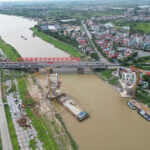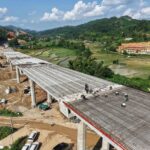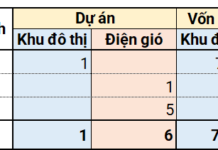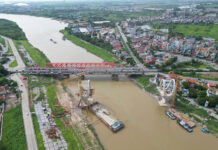Recently, the Ministry of Construction issued Decision No. 1873, officially adjusting the timeline for the Duong River Waterway Upgrade Project (Duong Railway Bridge). The completion date has been extended to December 2026, instead of the end of this year.
This project, utilizing medium-term public investment capital for the 2021-2025 period, is being implemented in Viet Hung Ward (former Long Bien District) and Phu Dong Commune (former Gia Lam District), Hanoi.
Despite a total investment of nearly VND 1.85 trillion, the project holds strategic significance in separating the road bridge from the railway bridge, alleviating traffic congestion on the Duong River—a vital northern connection to the capital. It also enhances the capacity of the No. 1 waterway corridor from Quang Ninh and Hai Phong to Viet Tri (Phu Tho). However, after nearly 28 months of construction, the project’s progress remains sluggish.
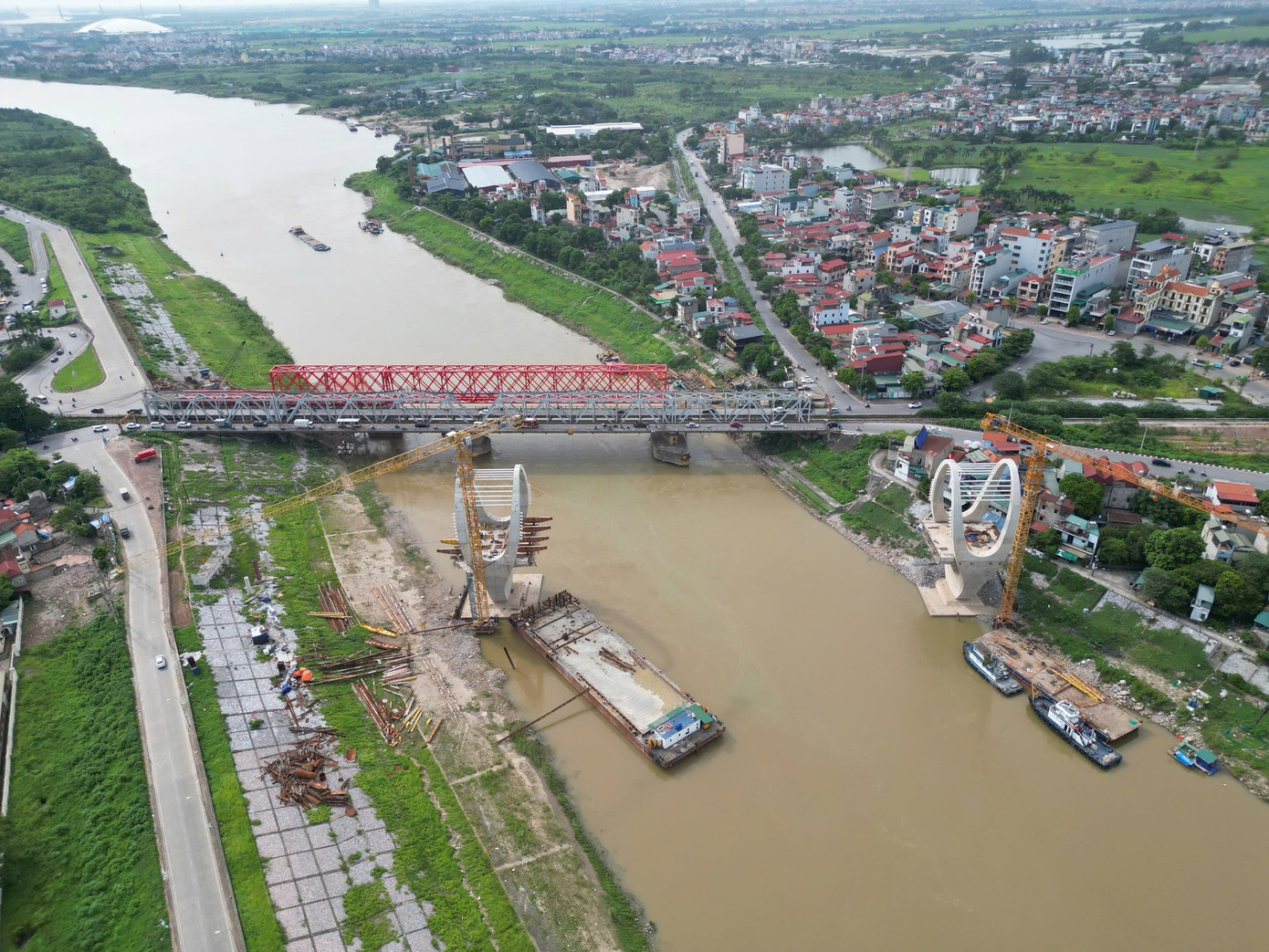
The Duong Railway Bridge completion date has been extended to December 2026. Photo: Song Huu.
According to the Railway Project Management Board, underwater and embankment components are largely on track, but onshore elements such as access roads and bridge approaches remain stagnant. The primary cause is the delayed handover of land.
As per the plan, the former Long Bien District and Gia Lam District were to complete land clearance by Q4/2024. However, Long Bien has only handed over 0.3/3.33 hectares, and Gia Lam has cleared 0.2/1.63 hectares—mostly public land, parks, and green spaces. This minimal area prevents contractors from organizing construction efficiently, optimizing costs, and meeting deadlines.
Similarly, the National Highway 2 (NH2) expansion project between Vinh Yen and Viet Tri (Vinh Phuc Province, now part of Phu Tho Province) faces comparable delays.
This 12 km project, with a total investment of nearly VND 1.26 trillion, began in February this year but has only achieved 2% completion. The Ministry of Construction has extended the deadline to 2027, spanning two medium-term public investment phases (2021-2025 and 2026-2030).
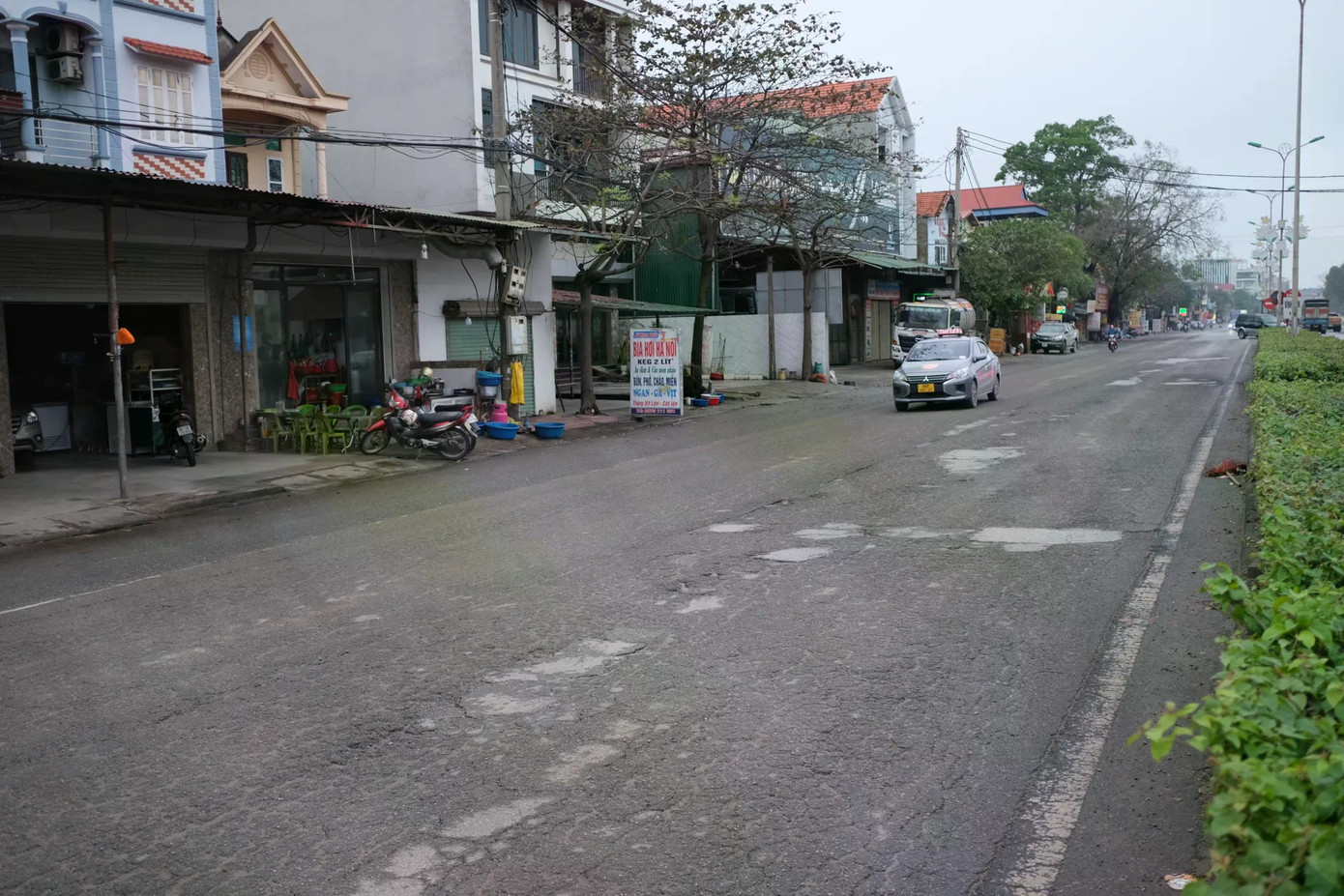
NH2 Vinh Yen – Viet Tri section. Photo: Sy Hao.
Notably, the project’s delay is not due to technical issues but legal inconsistencies in capital coordination mechanisms.
Initially, the project was proposed to be funded by a mixed budget—approximately VND 800 billion from the central government and VND 460 billion from Vinh Phuc. However, at the time of implementation, there were no clear regulations on combining, allocating, and disbursing funds between the two levels of government.
The 2015 State Budget Law prohibited provincial budgets from allocating funds for centrally approved projects, and Decree 99/2021 did not address this scenario. Only with the amended laws effective from January 1 this year did capital allocation gain legal basis, causing prolonged project stagnation.
Additionally, provincial mergers and two-tier government restructuring significantly impacted land clearance units, leading to organizational confusion and local personnel shortages, further delaying construction.
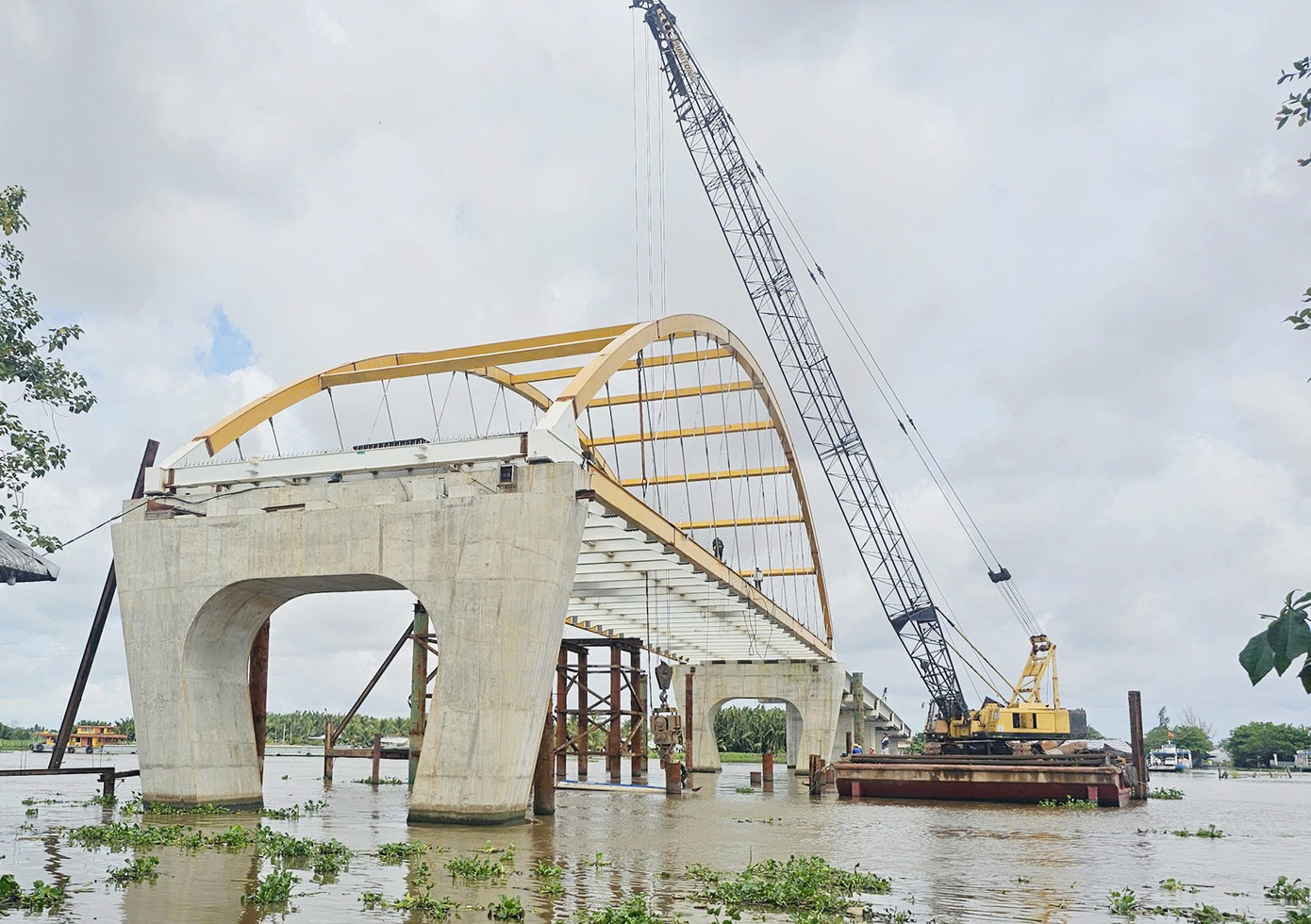
Construction of Vinh Tuy Bridge, part of the Ho Chi Minh Highway Rach Soi – Ben Nhut section (Go Quao – Vinh Thuan). Photo: An Giang Newspaper.
According to the Department of Economic and Construction Investment Management (Ministry of Construction), by late October, 8 out of 54 ongoing projects and sub-projects will miss the 2025 deadline. Besides the two aforementioned projects, major initiatives like the Ho Chi Minh Highway Cho Chu – Nga Ba Trung Son section, Rach Soi – Vinh Thuan Road, Cam Ly Railway Bridge, and the Noi Bai – Lao Cai Expressway connector to Tuyen Quang – Phu Tho Expressway are all behind schedule.
This reality highlights that despite adequate public investment allocation, persistent bottlenecks in land clearance, capital mechanisms, and local coordination capacity remain significant hurdles for infrastructure projects. Without comprehensive solutions, a “cascading delay” in public investment projects is inevitable in the coming phases.
Why the Ministry of Construction Extended Deadlines for Multiple Projects
Several key transportation and infrastructure projects are facing delays in meeting their year-end deadlines due to land clearance challenges and legal inconsistencies in budget allocation mechanisms. As a result, the Ministry of Construction has been compelled to extend their completion timelines by several years.
Unprecedented Reasons Surface as Multiple Provinces Fail to Utilize ODA Funds
As of October 14th, the disbursement rate of foreign-funded public investment projects across ministries, sectors, and localities stands at a mere 18.68%. Official Development Assistance (ODA) projects are facing significant bottlenecks, partly due to the consolidation of provinces and the implementation of the two-tier government model.
Exciting News: The 1.8 Trillion VND “Giao Duyên” Bridge Replaces 123-Year-Old Cầu Đuống – Which Company is Behind It?
The developer is currently preparing a report for the Ministry of Construction to extend the project timeline to December 2026, following delays caused by land clearance issues.


















